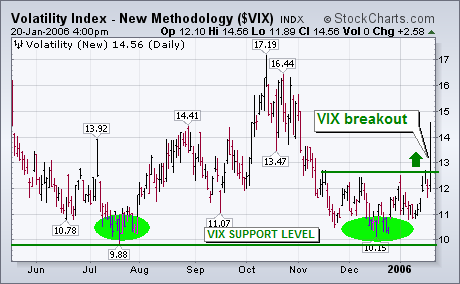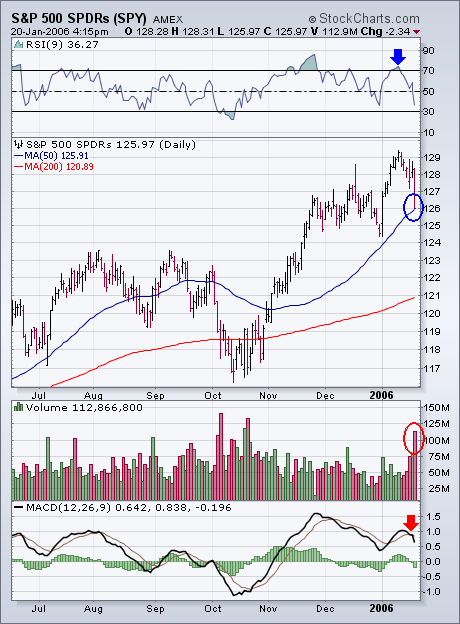A week ago Thursday I wrote a message entitled: "Low Volatility (VIX) Index May Increase Market Risk in 2006 -- S&P 500 Pulls Back From Overbought Condition" (January 12, 2006). The next two charts are updates of the ones shown at that time. I was concerned that a rising VIX from the lowest level in a decade could start to put downside pressure on an overbought market. So far that has been the case. Chart 1 shows the VIX breaking through its December highs to register an intermediate upside breakout. It's no coincidence that the jump in the VIX accompanied heavy stock selling. Chart 2 shows the short-term damage done to the S&P 500 SPDRs. Although the SPY closed right on its 50-day average, the daily MACD lines turned negative after failing to confirm the recent price move to new highs. Heavy downside volume is also negative. The last time the SPY saw such heavy trading was around its October lows. Heavy selling after a price decline often signals a bottom. Heavy selling after a price rise usually signals a top. This looks more like a top than a bottom. The blue arrow on the RSI line shows the "negative divergence" that I wrote about on January 12. After expressing concern about that divergence, I suggested that "this looks like a good time for short-term traders (or those looking for an excuse to take some January profit) to do so". Today's downside action suggests that it's time to do some more selling.








